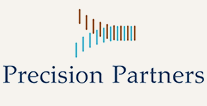In healthcare philanthropy, mid-level donor programs often present a key strategic challenge: Are they a destination for loyal supporters or a stepping stone to major gifts?
The truth is, they can be both.
For many donors, mid-level giving is their long-term philanthropic fit, offering consistent support and creating predictable revenue streams for healthcare organizations. These donors, who are committed to sustaining their giving at this level, provide stability and advocacy, forming the foundation of long-term success.
At the same time, mid-level programs can serve as a vital pipeline to major gifts by identifying donors with the capacity and interest to increase their contributions.
The challenge lies in balancing both approaches: cultivating lasting relationships with committed mid-level donors while strategically qualifying and nurturing those ready to transition to higher levels of giving. By understanding each donor’s engagement path and using data to guide decisions, healthcare organizations can create more effective, sustainable fundraising strategies that drive both immediate and future impact.
Mid-Level Donors as Committed Partners
For many donors, mid-level giving isn’t just a temporary phase—it’s the level at which they feel most comfortable and fulfilled. These donors have found their philanthropic “sweet spot” and choose to stay within the mid-level giving range year after year. When properly nurtured, they become some of your most reliable supporters, consistently engaging with your organization and advocating for your mission.
These committed mid-level partners demonstrate their loyalty through various ways.
- Consistent annual gifts within the mid-level range
- Multi-year commitment to this giving level
- Active participation in mid-level activities and events
- Strong satisfaction with their engagement experience
- Advocacy and word-of-mouth support for your organization
The actual value of these mid-level supporters lies not only in their consistent financial support but also in their intentional decision to remain at this level. They help create predictable revenue streams and provide a stable foundation for your programs. This creates several organizational benefits.
- Predictable annual revenue that can be relied upon for planning purposes
- Stable support for key initiatives and programs
- Efficient relationship management with clear expectations for engagement
- Program advocacy that helps amplify your mission within the community
Mid-Level Donors as a Pipeline to Major Gifts
While some donors find their philanthropic home at the mid-level, others may see it as a step toward becoming major donors. Mid-level programs provide critical insights into which donors have the potential and interest to increase their giving. Not every mid-level donor will transition to a significant gift, but the right engagement strategy can help you identify and cultivate those ready for deeper involvement.
When a mid-level donor moves toward making a major gift, it’s a significant milestone in the relationship. However, these transitions are most successful based on clear, documented insights about the donor’s history and motivations. Donors who transition into major giving are:
- Demonstrating giving capacity for more significant gifts
- Establishing a relationship with your organization
- Expressing a deep, documented interest in your cause or programs
- Demonstrating a clear preference for certain types of engagement, whether through direct communication or involvement in specific initiatives
Understanding donor behavior in mid-level programs clarifies the process and confirms that your major gift officers should focus their time and energy on the most promising prospects. Equally important is recognizing when donors prefer to stay at their mid-level commitment, allowing you to respect their preferences while providing continued value and stewardship.
The Strategic Advantage of Managing Mid-Level Donor Programs
Mid-level donor programs allow you to gain valuable insights into your donor base. By managing a 600-700 prospects portfolio, you can uncover natural giving preferences and identify emerging significant gift potential. This clarity enables you to:
- Understand the self-selection of giving levels among your donors
- Identify clear engagement patterns that suggest readiness for significant gifts
- Streamline the qualification process to identify prospects who require more personalized attention
- Leverage a broader network of relationships for future cultivation
- Deepen your understanding of donor motivations and how they align with your mission
Knowing which donors are likely to remain at the mid-level and who are ready to transition to significant gifts allows you to allocate resources more effectively. This understanding optimizes your engagement strategies and focuses your fundraising efforts on the most impactful opportunities.
Maintaining A Foundation for Sustainable Revenue
For many healthcare organizations, mid-level giving creates a stable, predictable revenue stream. It also fosters long-term relationships with supporters who find meaningful engagement at this level. Successful mid-level programs are built on:
- Understanding that mid-level donors may not necessarily aspire to make significant gifts, and that’s okay.
- Identify those who have the potential to increase their giving or transition to significant gifts and nurture these relationships accordingly.
- Create a sustainable cycle of giving that doesn’t solely rely on significant gift prospects but includes loyal donors who are deeply committed to your cause.
In a rapidly evolving philanthropic landscape, it’s essential to recognize the evolving role of mid-level programs. These programs maintain a core group of donors while providing a funnel for future major gifts. By respecting donor preferences and providing a clear pathway for engagement, you can:
- Build strong, long-term relationships with committed mid-level donors
- Identify donors who are likely to increase their support
- Design targeted engagement strategies for both your current mid-level donors and potential major gift donors
Understanding and Honoring Both Paths
Mid-level donor programs provide dual value: They nurture a base of loyal supporters who prefer to stay at this level while also offering pathways for identifying and cultivating future major donors.
The success of your mid-level donor program hinges on recognizing that some donors will remain at this level as long-term partners. In contrast, others will naturally evolve toward significant gifts. Both paths contribute uniquely to the health and sustainability of your healthcare mission.
Rather than pushing donors toward major gifts, focus on honoring their chosen level of engagement—whether it’s mid-level or significant. Understanding and supporting their journeys creates a more sustainable and personalized donor experience. This allows your mid-level program to be both a destination for loyal supporters and a journey that nurtures meaningful major gift relationships—driving the long-term success of your organization.
A thriving mid-level donor program celebrates both loyal supporters and emerging major gift prospects, each contributing to the overall mission in their way. When managed strategically, mid-level donor programs can be the cornerstone of your organization’s fundraising success.

